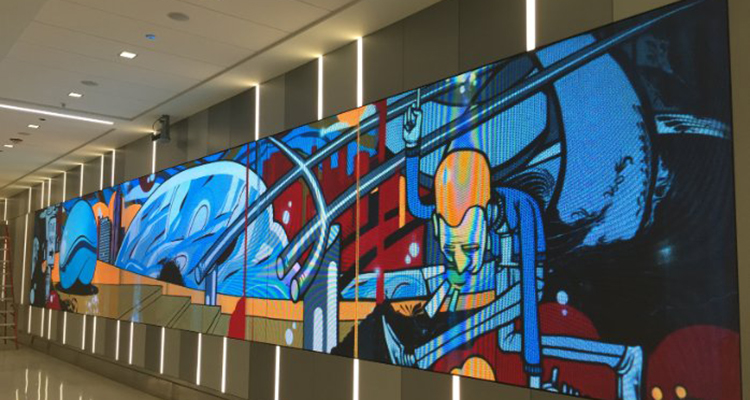Five Reasons Why AV Is Not IT
 For the past few years the conversation of AV and IT convergence has been discussed ad-nauseam. While this article is no different in subject matter, I’m writing to pose a counter-argument. Before the AV nerds of the inter-webs declare this blasphemy, this should be taken as a tongue and cheek observation. Obviously, AV systems today more closely resemble IT assets in both form and function. Putting AV on your network to interact within the larger building system ecosystem, gathering usage data, and centralizing support are just a few of the benefits, as I explain in another post ‘Smart AV Evolution.’
For the past few years the conversation of AV and IT convergence has been discussed ad-nauseam. While this article is no different in subject matter, I’m writing to pose a counter-argument. Before the AV nerds of the inter-webs declare this blasphemy, this should be taken as a tongue and cheek observation. Obviously, AV systems today more closely resemble IT assets in both form and function. Putting AV on your network to interact within the larger building system ecosystem, gathering usage data, and centralizing support are just a few of the benefits, as I explain in another post ‘Smart AV Evolution.’
With that said, is it fair to assume that AV should now be designed, purchased, and implemented like Information Technology? I don’t think so, at least not yet, and according to some industry feedback, I’m not alone. Here’s the top 5 reasons that seem to keep coming up:
AV is Still “Audio” and “Video”
Audiovisual components are sometimes the first thing you see and hear upon entering a space. They’re designed to invoke a response, an emotion, to impact users or visitors. From a shopping mall with a large LED video wall in the entryway, to the sound quality of your Boardroom’s audio conferencing system. No matter how technology changes, all of those 1’s and 0’s ultimately convert to something that can be seen or heard, which requires extensive knowledge of delivering high-quality audio and video systems. One colleague stated:
“The wrong choice in a microphone, speakers, or a store bought TV can cause everything from interoperability issues, to poor image and sound quality, to persistent service headaches.”
AV & Architectural Considerations
AV has an interesting task of balancing both the technical, as well as aesthetic aspects of a space. Not only does an AV professional need to understand the technology and impact to a building network, they need to understand how it aligns with the vision the architect is trying to achieve. From their impact to electrical, mechanical and structural specifications, to furniture and finishes, how the final AV solution will look has a specific aesthetic purpose that must be honored.
AV Installation Acumen
The “meat” of the Design/Build/Support sandwich. If you’re trusting your AV installation to a team that’s better suited for cabling installation, you could be doing more harm than good. Qualified AV installers are experienced in best practices for safely installing heavy AV components (many times of which are located over your head!). If this is short-changed, not only could your installation look sloppy, but it could be potentially hazardous.
Implementing Standards & UX
I have to hand it to them, IT professionals and staff have an extremely challenging task of implementing and supporting complex networks for complex businesses. To do this, IT teams have developed specific standards and processes that help with these challenges. But, are standards and processes used for information technology directly applicable to AV? Likely not all the time. At a single person workstation you’ll find your standard IT components (work area outlets, desk phone, PC, laptop dock, etc.).
But scale up to a huddle room and or conference room, and you’re dealing with an entirely different set of physical parameters which must translate directly to the audiovisual systems being specified.
Different business units may require different needs, i.e. corporate training departments vs. international sales departments. Which leads me to User Experience. Try as I may, I just can’t escape this buzzword. This may be an over simplification, but as one AV pro puts it: IT typically establishes and dictates to their clients (users) how they will access info and use the network. And for good reason. However, AV must take input from a variety of users and groups and deliver a solution that everyone is comfortable using. Ultimately, we’re both required to implement for the best User Experience, it’s just how we get from Point A to Point B that is different.
Clients Need Both
This post is in no way diminishing the critical importance of choosing quality IT vendors or staff. Quite the opposite. This is meant to show that AV and IT professionals possess equally important, yet different skill sets. Ultimately, the ideal vendor will have a strong knowledge of the other disciplines importance in order to successfully deploy compatible audiovisual and IT systems in today’s business world.





